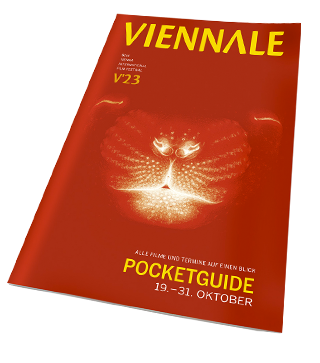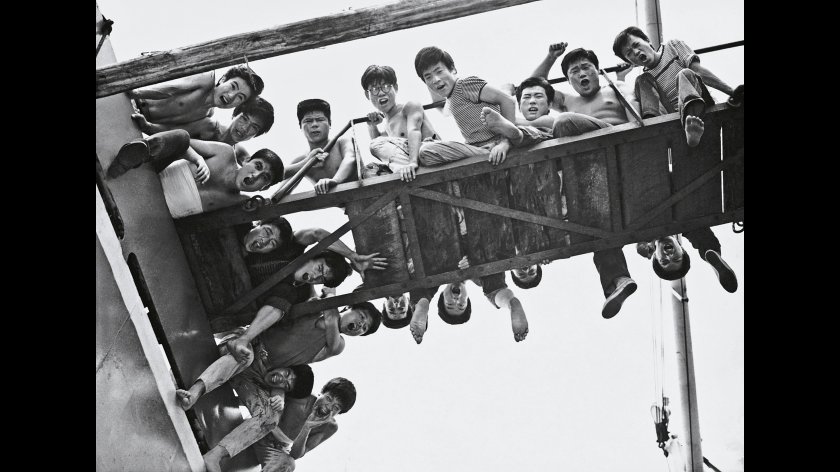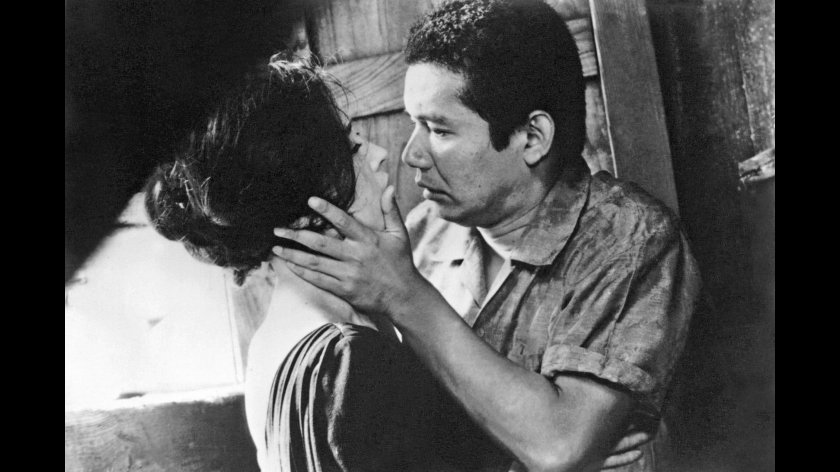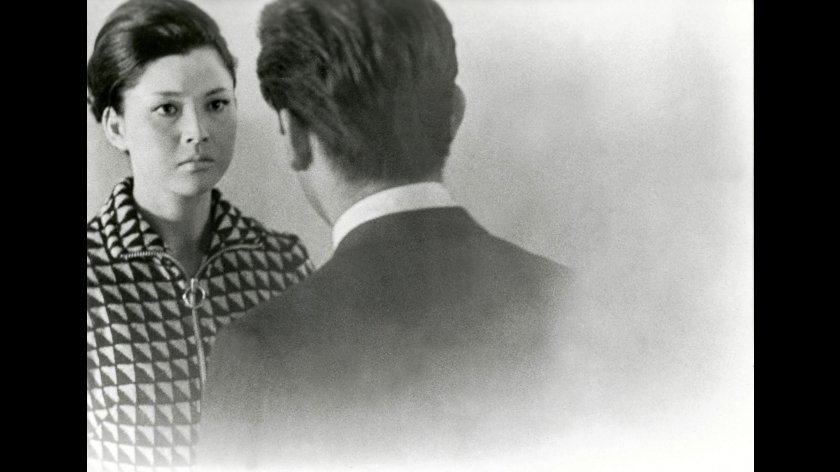Chi wa kawaiteru
Blood is Dry a.k.a Bloody Thirst
Als die gesamte Belegschaft von Entlassung bedroht ist, setzt sich Herr Kiguchi die Pistole an die Stirn – eine Geste, die um ein Innehalten ansucht. Es sei ihm gar nicht um den eigenen Job gegangen, sondern um das Glück der Vielen, wird er später sagen; da ist er bereits – dank einer ehrgeizigen Werbefachfrau, die in ihm ein Karrieresprungbrett sieht – zu einer Art Volksheld aufgestiegen. Doch es ist schwierig, wenn nicht gar unmöglich, in einer von Eigennutz geprägten, moralisch ambivalenten Gesellschaft ein authentisch-empathischer Mensch zu sein. Yoshida zeigt dies auf eine forsche und ruppige Weise, als wäre sein Film ein Impro-Set in einem Jazz-Keller. (Alexandra Seitz)
No film more clearly shows Yoshida’s difference from the mainstream Japanese cinema of his time than BLOOD IS DRY. In opposition to directors such as Kurosawa Akira and Kinoshita Keisuke, Yoshida rejects the humanist ideology of postwar Japan in its entirety. Kiguchi (Sada Keiji), the hero of BLOOD IS DRY, is a salaryman who, when his fellow employees are faced with the loss of their jobs, intervenes on their behalf by threatening suicide. Yoshida sees Kiguchi not as a heroic symbol of the solidarity of Japan’s hard-working, stoically suffering and fundamentally decent people, but as a monster created by the demand of mass media for such figures.
Yoshida’s critique of the spectacular society of 1960 is, no doubt, caricature, but viewers today may find it more convincing than similar critiques in such roughly contemporary films as Elia Kazan’s A FACE IN THE CROWD and John Boulting’s I’M ALL RIGHT, JACK. Yoshida’s visual style, raw and brutal but also sinuous and richly textured, opens up the satirical realism of the film to the purely cinematic concerns that would increasingly preoccupy Yoshida throughout his career. (Chris Fujiwara)
Alle Retrospektiven-Filme, die nach der Viennale – ab dem 2.11. – im Filmmuseum gezeigt werden, können selbstverständlich auch wie gewohnt auf www.filmmuseum.at oder unter Tel. 01/533 70 54 reserviert und an der Kassa des Österreichischen Filmmuseum gekauft werden. Es gelten die Preise des Filmmuseums.
Yoshida Kijū: GOOD-FOR-NOTHING (1960), BLOOD IS DRY A.K.A BLOODY THIRST (1960), BITTER END OF A SWEET NIGHT (1961), AKITSU SPRING (1962), 18 WHO CAUSE A STORM A.K.A. 18 ROUGHS (1963), A STORY WRITTEN WITH WATER (1965), WOMAN OF THE LAKE (1966), IMPASSE (1967), THE AFFAIR (1967), AFFAIR IN THE SNOW (1968), FAREWELL TO THE SUMMER LIGHT (1968), EROS + MASSACRE (1969), HEROIC PURGATORY (1970), COUP D’ETAT (1973), A PROMISE (1986), WUTHERING HEIGHTS (1988), WOMEN IN THE MIRROR (2002), BEM-VINDO A SÃO PAULO (2004, Episode)
- The Japan Foundation
- Sada Keiji
- Mikami Shinichiro
- Yoshimura Mari
- Iwasaki Kaneko
- Yoshida Kijū
- Narushima Toichiro
- Sugihara Yoshi
- Hayashi Hikaru






